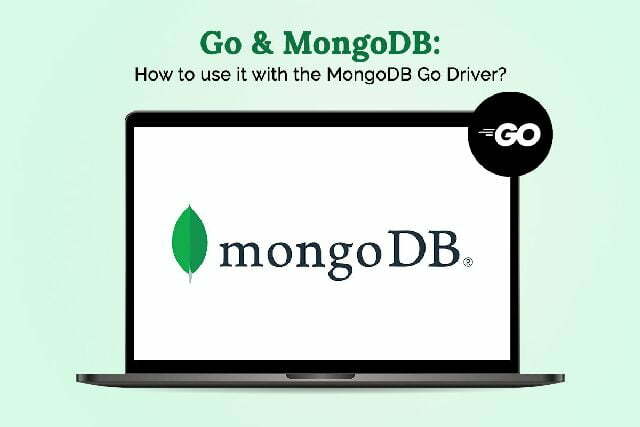Go and MongoDB are powerful tools used by developers and programmers worldwide to create & develop programs and applications. Before jumping into how they are related, here is a detailed look at both of them.
Golang – Designed and developed by Google, Golang or Go is an open-source programming language that allows programmers and developers to create simple and reliable programs. According to Wikipedia, It is a very simple, easy-to-learn language that offers tons of advantages over other programming languages, such as high scalability, better security, platform independence, etc.
MongoDB – MongoDB is a document-based non-relational database that allows developers and programmers to create highly scalable web-based applications. Since it uses a flexible schema approach, it is very popular among teams who follow agile methodologies. MongoDB is a fully cloud-based platform that features a user-friendly interface and offers powerful analytical and querying tools. It offers support for numerous programming languages, including Golang.
Since MongoDB supports the Golang programming language, developers extensively use them together for projects that involve them. Earlier, MongoDB relied heavily on third-party extensions and solutions to work on Golang-based projects. However, in 2019, the NoSQL platform finally released a dedicated Go-based driver. This article will cover what the MongoDB Go driver is, how you can install it on your Mac, and how you can use Go with MongoDB using the dedicated driver. Let us get started.
What is the MongoDB Go Driver, and How to Install It?
To ensure Golang works seamlessly with MongoDB, the latter introduced a dedicated driver called the MongoDB Go driver. The Go driver allows users to use the NoSQL database for managing go-based projects conveniently. To get started with the platform and know how to use Go with MongoDB on Mac, Windows, or any other platform, one of the first things that a user needs to do to set up MongoDB as a data source in Go is install the Go driver.
Here are the steps following which you install the MongoDB Go driver on Mac:
- Create a new directory and initialize a new project using the “go mod.” Ensure that you use the right terminal commands.
- Once the directory has been created, add the dependency using the “go get” command.
- To connect the dedicated driver, create a new Atlas account.
- In the new account, place a free cluster, and include your IP address to the list of allowed connections.
- Finally, create a new user for the free cluster deployed and interconnect them.
Then, follow the registration steps to complete the process.
How to Use Go With MongoDB using the MongoDB Go Driver?

Once the driver is installed on your system and connected to MongoDB, you can conveniently use it to perform numerous CRUD (create, read, update and delete) operations on MongoDB. Let us take a look at some of the most common ones:
Inserting Single or Multiple Documents
Since MongoDB is a document-based NoSQL database, you can use the MongoDB driver to insert documents. To insert a single document, you need to use the “insertOne” method. Similarly, if you wish to insert multiple documents simultaneously, you can use the “insertMany” method. You need to create and initialize the “Person” struct with the data regardless of which operation you are performing.
Searching and Retrieving Data
Users can also find the data they require from collecting documents using the MongoDB Go driver. However, you would first require a specific pass filter to do so. Using a pass filter ensures that you are importing the right package. Similarly, you can also use the “find” method to search for any matching documents. To narrow down the search vicinity further, you can also use the “options” package to create filters.
Updating Data in Documents
You can also use the “UpdateOne” method by applying the filter object to update data in a specific document. All you need to do is enter the name of the entity you are looking to modify along with the alteration you want to implement and execute the code. For instance, if you wish to update all the documents which feature the name “Mark” and decrease the age’s value by 2, you can conveniently do so using the “UpdateOne” method.
Deleting Documents
If you wish to delete certain documents from any of the database’s collections, you can do it in two ways, i.e., by using the “DeleteOne” method or the “DeleteMany” method. If you wish to delete a single document, use the “DeleteOne” method. On the other hand, if you want to erase multiple documents, use the “DeleteMany” method.
MongoDB and the Golang programming language feature a smooth integration, and the MongoDB Go driver only enhances the equation furthermore. The driver is a great utility that adds to the benefits of the NoSQL database and the open-source programming languages.
